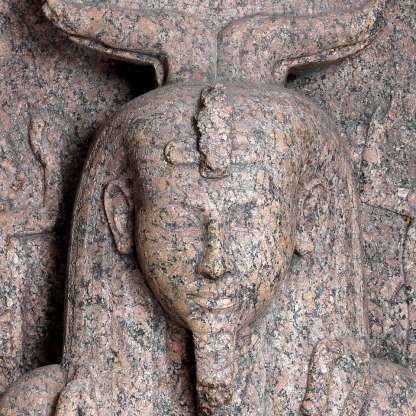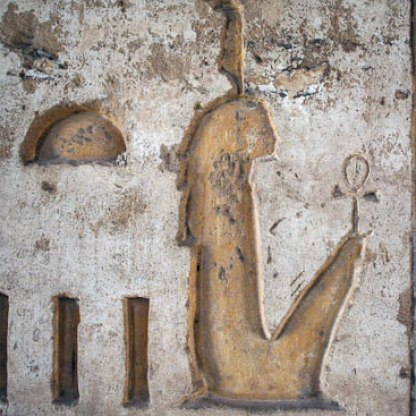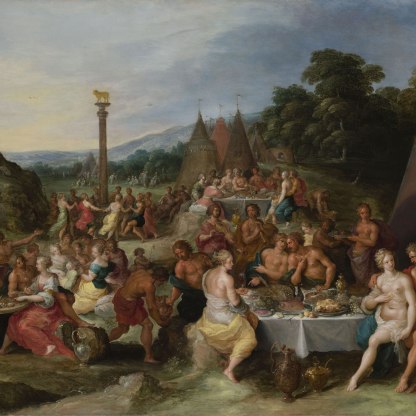Osiris
The fullest version of the Osiris myth is told by the Greek historian and philosopher Plutarch (46 – c.120 CE). Though his account is rather late, it ties in well with evidence that we have from earlier periods.
Osiris was the first king of Egypt, the son of Geb (god of the earth) and Nut (goddess of the sky). He was a good king and with his wife, Isis, who was also his sister, he taught mankind how to grow crops and harvest them. His brother Seth was god of the desert, storms and winds, a force of chaos in opposition to maat ('right order'). Seth was, in fact, so dangerous that, when his name needed to be written, a protective amulet sign was often used in its place.
Seth was jealous of Osiris and plotted to kill him so that he could take the throne. There are several stories about how he did this. In one, Seth hacked his brother’s body apart and buried the pieces in different parts of Egypt. Isis recovered all the pieces apart from the phallus, which had been swallowed by a fish. Having re-assembled what she had, Isis and her sister Nephthys then turned themselves into kites and used their wings to protect Osiris’s body and to waft the breath of life back into his lungs.
In another story, Seth invited Osiris to a party, during which he offered the prize of a beautiful chest to whoever could fit inside it. As with Cinderella’s slipper, everyone tried the chest out for size, but the only one that it fitted was Osiris. As soon as he was inside, the friends of Seth slammed the lid shut and sealed it. The chest was thrown into the Nile and Osiris was drowned. It floated out into the Mediterranean and came to rest on the shore at Byblos in the Lebanon. A tree sprouted from the chest, and Isis, who was searching for her husband in the form of a kite, flew into its branches. Using magic, she was able to re-animate Osiris.
Osiris became the king of the dead. His son Horus was expected to succeed to the throne of Egypt, but first he had to contend with his father’s killer, Seth.
There are different accounts of how Horus was eventually established as the rightful king of Egypt. In one version, found on a papyrus in the village of the workmen who built the tombs in the Valley of the Kings, a tribunal of gods had to judge between Horus and Seth. In another, depicted in detail on the walls of the temple of Horus of Edfu, Horus eventually speared Seth, who had turned himself into a hippopotamus.
These myths were central to the concepts of Egyptian kingship. The current ruler was always identified with Horus, while his deceased predecessor was notionally Osiris. When a ruler died, his successor (who may or may not have been his actual son) became the next Horus.
The Osiris myths were important for the notion of rebirth. However, the Egyptians believed that the sun also had an important role to play in this process. This is nowhere more clearly seen than in the Valley of the Kings. The walls of the tombs there are covered with depictions of the sun-god (accompanied by the king) passing through the Underworld, during which voyage he restores Osiris to life in the fifth hour of the night.
Other highlight objects you might like
Other pathways and stories you might like
Sign up to our emails
Be the first to hear about our news, exhibitions, events and more…






